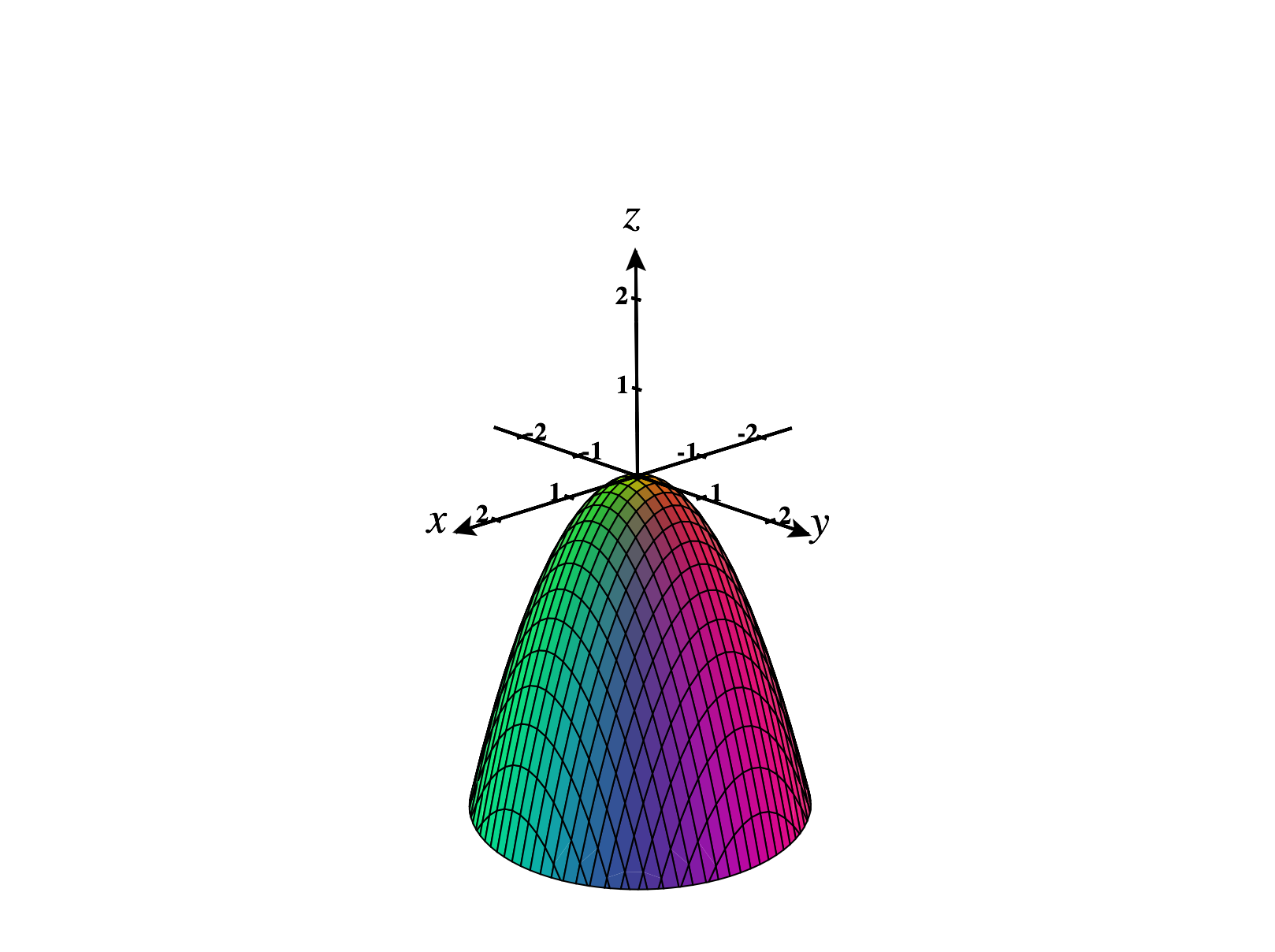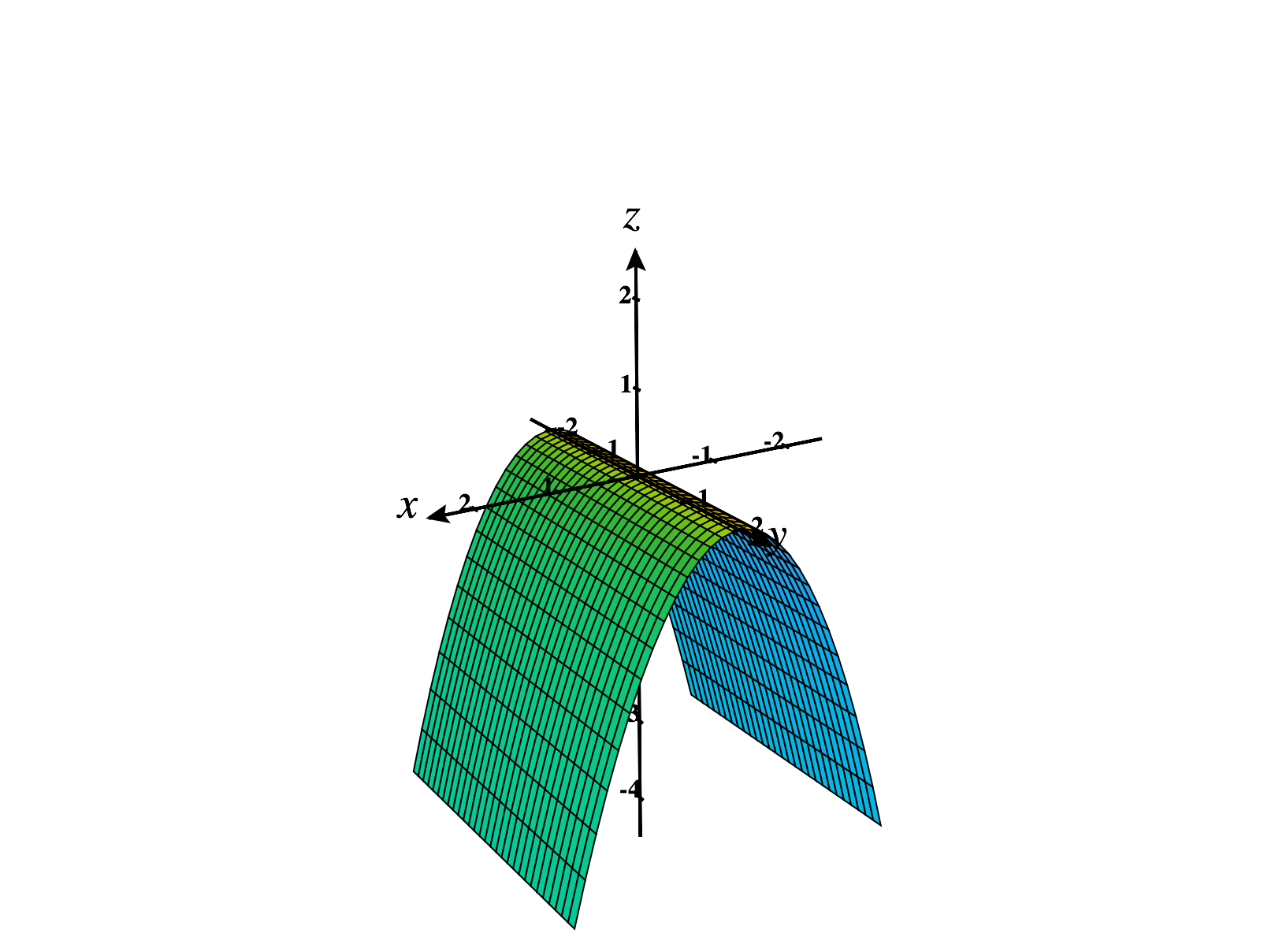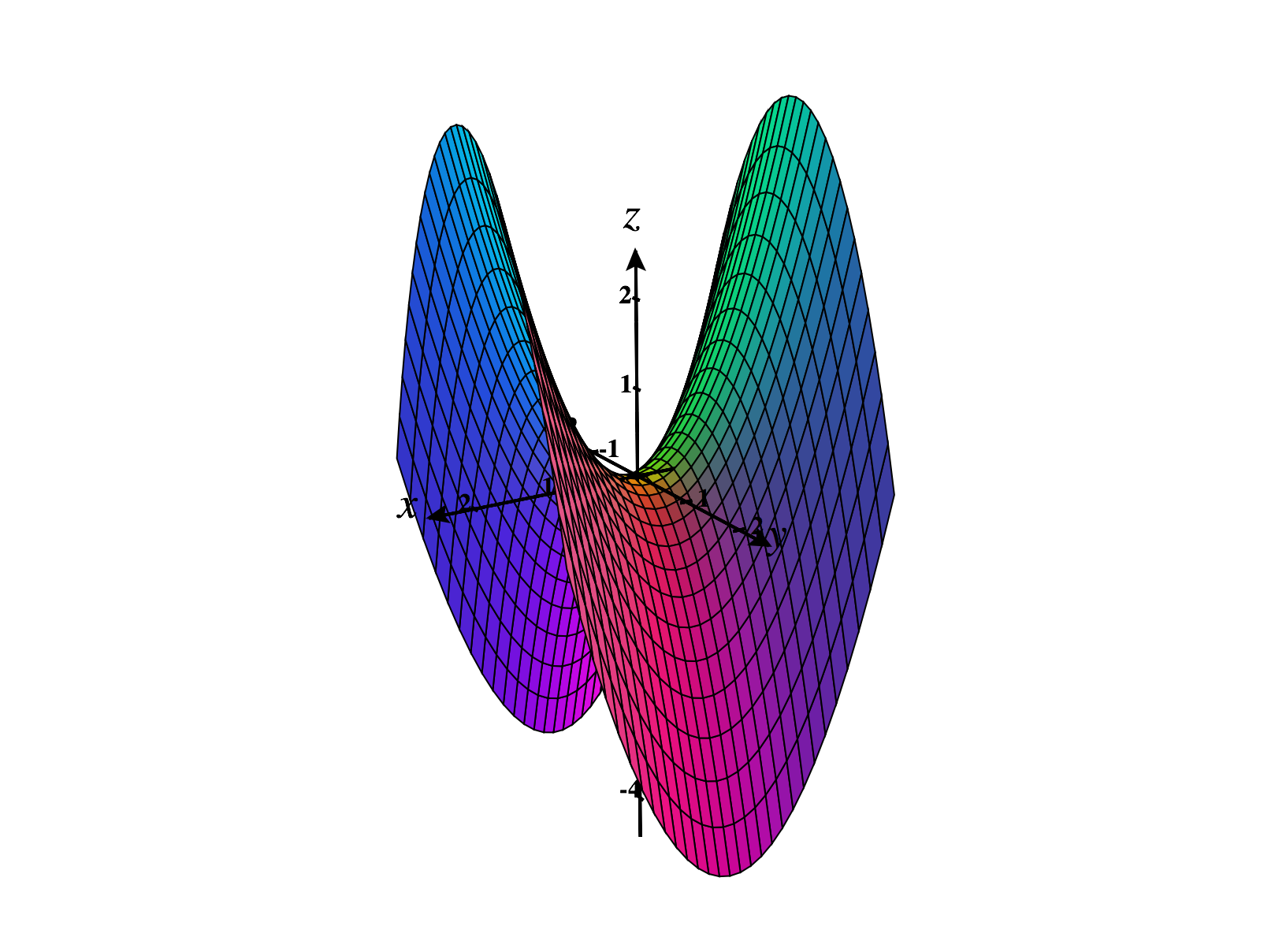In order to better understand the behavior of multivariable functions, we would like to define some sort of second derivative for multivariable functions. For first derivatives, we have the gradient and derivative matrix filling the roles of derivatives for scalar-valued and vector-valued functions, respectively. Before we define the second derivative, we will try to understand second-order behavior in multivariable functions specifically. That is, we’ll consider polynomials in -variables that only terms of degree , and determine how these polynomials behave.
Polynomials with this property are very important throughout mathematics, and they are called quadratic forms. You’ve frequently seen a quadratic form which arises from the length of a vector ,
Quadratic Forms
On the other hand, and are not quadratic forms, since they’re not polynomials. Also, the polynomials and are not quadratic forms, since they include terms of degrees other than
For any quadratic form
we can write Thus, we can represent the quadratic form with the matrix
The quadratic form corresponding to the matrix is
The quadratic form corresponding to the matrix is
Notice in the previous example, there were two different matrices that gave rise to the same quadratic form. In general, there will be many different matrices corresponding to the same quadratic form. However, if we add the condition that a matrix be symmetric, then we do have uniqueness.
Categorizing Quadratic Forms
We can categorize quadratic forms according their behavior. This behavior tells us about the shape of their graphs, and these observations will be important when we transition to studying the behavior of more general functions.
- positive definite if for all .
- negative definite if for all .
- positive semi-definite if it is not positive definite, and for all .
- negative semi-definite if it is not positive definite, and for all .
- indefinite if it is none of the above. That is, there exist such that and .

The graphs of other positive definite quadratic forms on look similar, though they may be stretched in various directions. Notice that for a positive definite quadratic form, there is always a strict minimum at the origin.
The quadratic form is negative definite. Its graph is pictured below.

The graphs of other negative definite quadratic forms look similar, though they may be stretched in various directions. Notice that for a negative definite quadratic form, there is always a strict maximum at the origin.
The quadratic form is positive semi-definite. Its graph is pictured below.

The graphs of other positive semi-definite quadratic forms look similar, though they may be stretched in various directions.
The quadratic form is negative semi-definite. Its graph is pictured below.

The graphs of other negative semi-definite quadratic forms look similar, though they may be stretched in various directions.
The quadratic form is indefinite. Its graph is pictured below.

The graphs of other indefinite quadratic forms look similar, though they may be stretched in various directions. Notice the behavior of the graph around the origin; because of its shape, this is called a saddle point.
Sylvester’s Theorem
We can use the symmetric matrix representing a quadratic form to classify the quadratic form, by looking at a sequence of determinants.
- If all of the determinants are positive, so for all , then is positive definite.
- If , and the signed of the determinants alternate (so the odd numbered determinants are negative, and the even numbered determinants are positive), then is negative definite.
- If all of the determinants are nonzero, but don’t follow the above patterns, then is indefinite.
Notice that this theorem requires that be a symmetric matrix. Also, in the case where one or more of the determinants is zero, we can’t use this theorem to classify the quadratic form.
Based on this sequence of determinants, and using Sylvester’s Theorem, we have
Based on this sequence of determinants, and using Sylvester’s Theorem, we have
From this, we can find the symmetric matrix representing to be
We now find the sequence of determinants for the symmetric matrix above.
Based on this sequence of determinants, and using Sylvester’s Theorem, we have